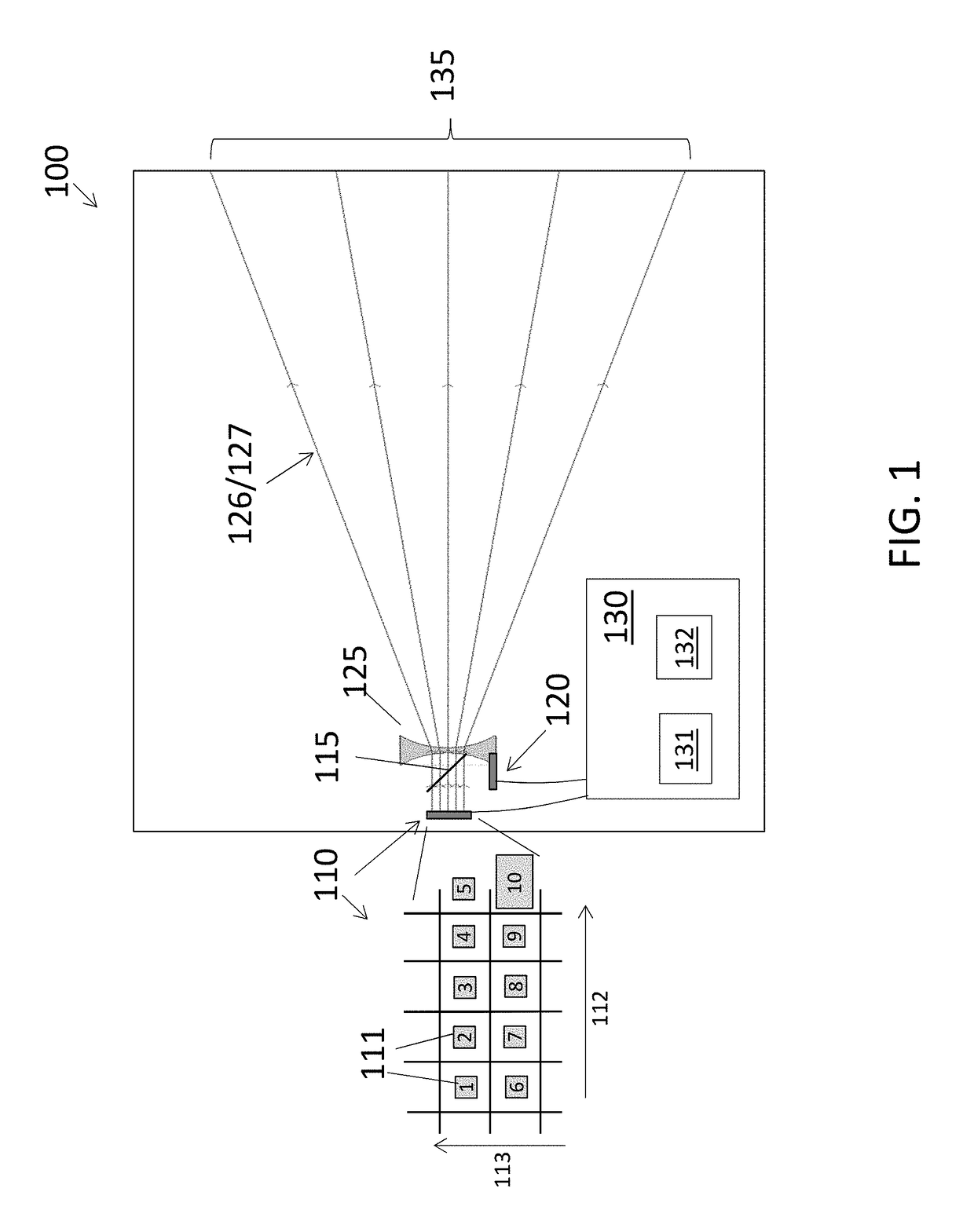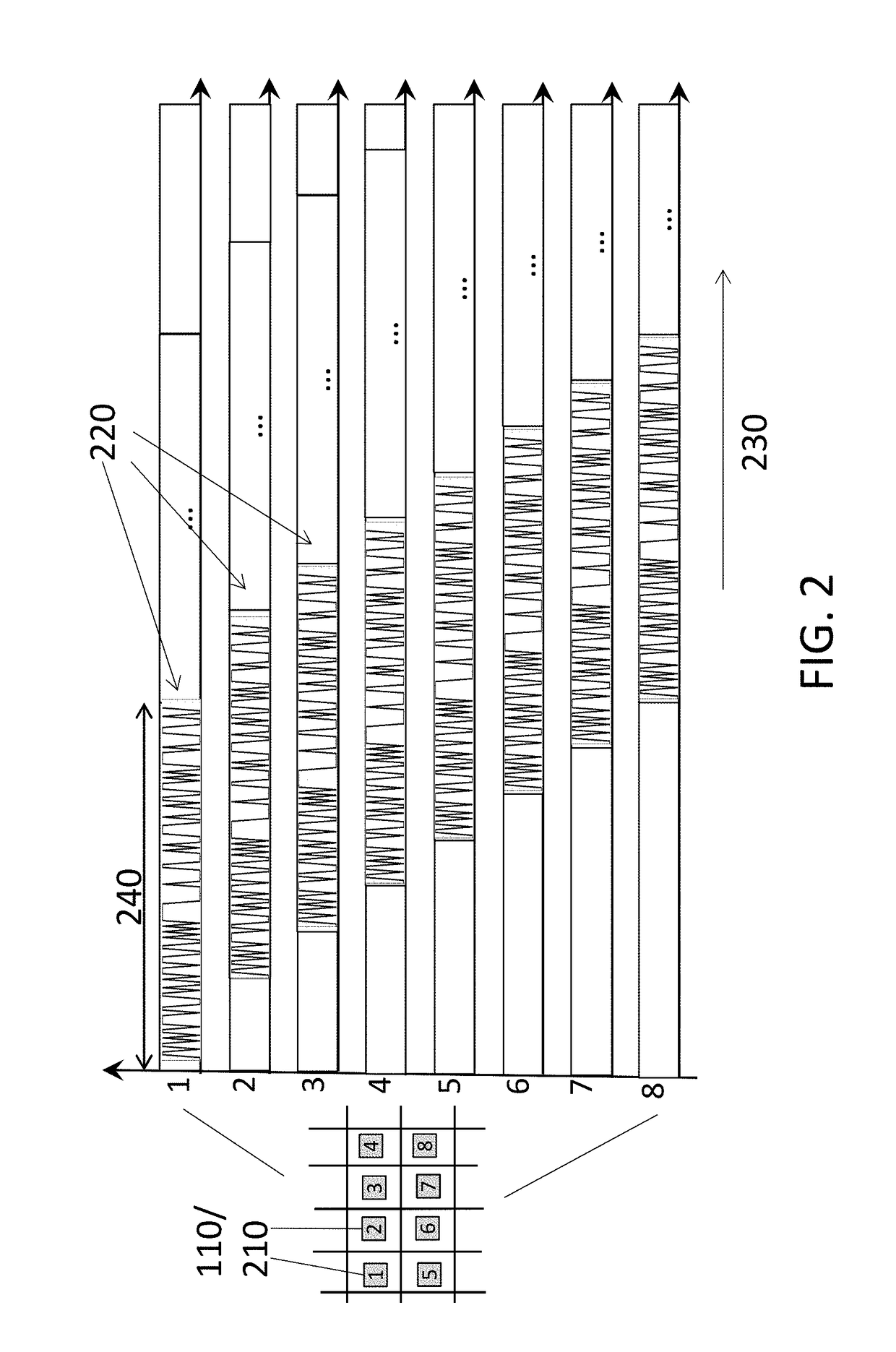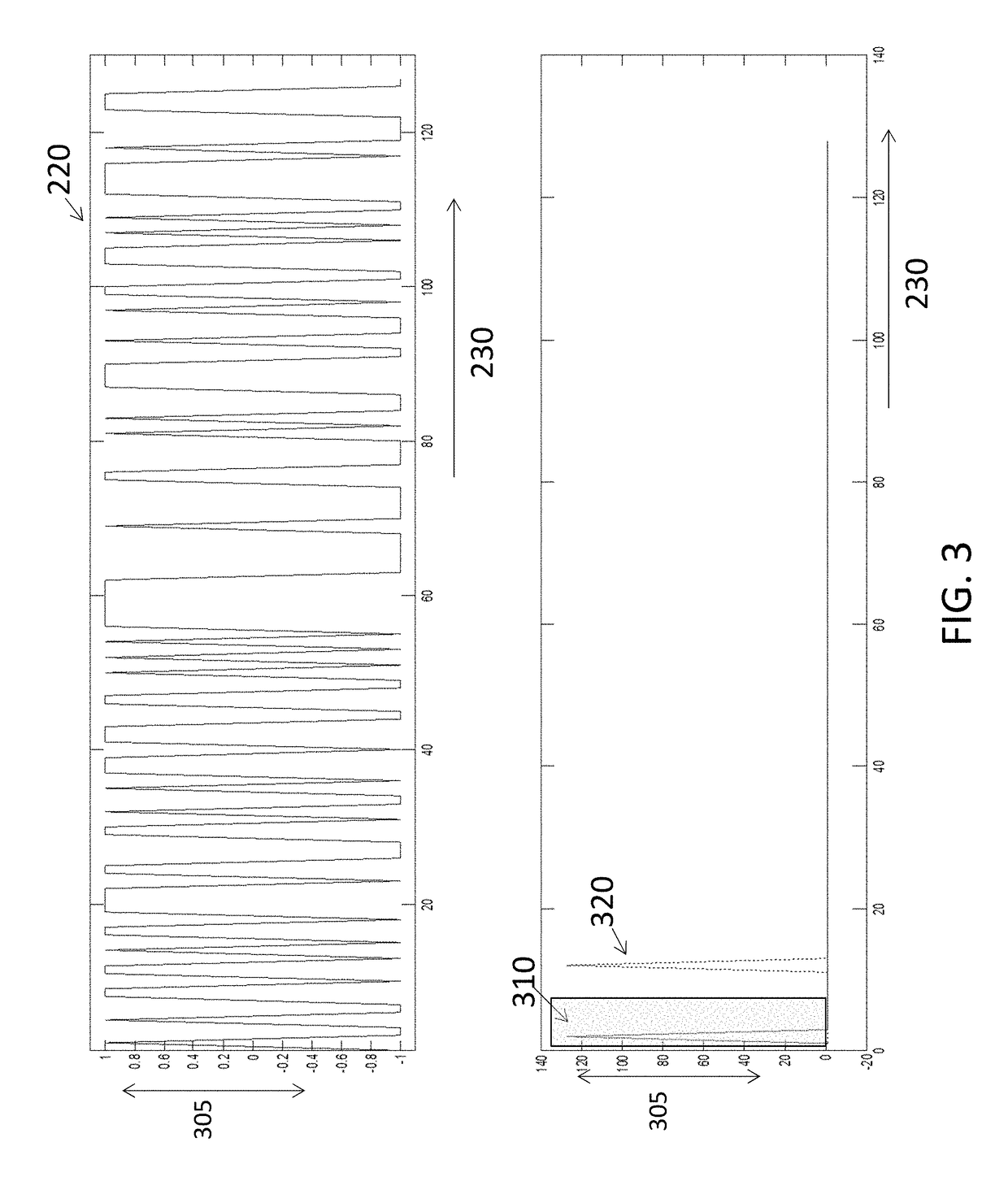Pseudo random sequences in array lidar systems
a technology of array lidar and random sequences, applied in the field of pseudo random sequences in array lidar systems, can solve problems such as difficult resolution of reflections at the receiver
- Summary
- Abstract
- Description
- Claims
- Application Information
AI Technical Summary
Benefits of technology
Problems solved by technology
Method used
Image
Examples
Embodiment Construction
[0012]As noted above, lidar systems are used for detection and ranging. Lidar systems have diverse applications in areas such as landslide investigations, archaeology, oil and gas exploration, meteorology, and navigation (e.g., obstacle detection) in automotive applications. As also noted, concurrently transmitting light from multiple illuminators of an array results in multiple reflections that must be resolved to remove ambiguity and obtain meaningful information. Prior array lidar systems have avoided the interference among reflections by transmitting from each illuminators of the array in turn in a time division multiple access (TDMA) scheme. Embodiments of the systems and methods discussed herein relate to concurrent transmission, with two or more illuminators of the array lidar, of pulse sequences that facilitate resolution or differentiation of the reflections associated with each illuminator on the receiver side. Specifically, the transmission from each illuminator is of a s...
PUM
 Login to View More
Login to View More Abstract
Description
Claims
Application Information
 Login to View More
Login to View More - R&D
- Intellectual Property
- Life Sciences
- Materials
- Tech Scout
- Unparalleled Data Quality
- Higher Quality Content
- 60% Fewer Hallucinations
Browse by: Latest US Patents, China's latest patents, Technical Efficacy Thesaurus, Application Domain, Technology Topic, Popular Technical Reports.
© 2025 PatSnap. All rights reserved.Legal|Privacy policy|Modern Slavery Act Transparency Statement|Sitemap|About US| Contact US: help@patsnap.com



